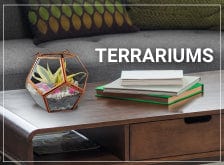How to Grow
Parasites- Plants which depend on other plants for food
We come across many kinds of plants around us. In the earlier blogs, we have discussed about Plants which are hard to kill, Plants with Unusual looking flowers, Plants which survive with less water and Carnivorous plants which feed on the insects. Here is another category of plants which feed on other plants for food. Yes, you read it right. This category of plants is called Parasitic Plants. They depend on the neighboring plants for their survival. They possess modified roots, called haustoria, which penetrate undetected into the vascular system of their host and absorb the nutrients required for their growth.
Parasitic plants are categorized according to the type of attachment in has with the host plant.
Types of Parasitic Plants
1. Dependability on the host plant.
If the parasitic plants totally depends on the host, then they are called Obligate parasites.
If the parasitic plants are capable of living independently in the absence of the host plant, they are called Facultative parasites.
2. Production of chlorophyll.
If the parasitic plants are capable of producing chlorophyll by themselves but depends on the host plant for some amount of nutrition, they are called Hemiparasites.
If the parasitic plants are pale yellow or not capable of producing chlorophyll and depend totally on the host plants is called Holoparasite.
3. On the position of the Parasite.
If the parasitic plants are found attached to the host from inside, they are called Endoparasites.
If the parasitic plants is attached to the host externally, they are called Exoparasites.
Here are some of the Parasitic Plants
1. Rafflesia Arnoldii:

Rafflesia Arnoldii, world's biggest flower also has another grade to its cap. It is not only the biggest flower in the world but also a parasitic plant. Rafflesia is grown in the forests of Indonesia and Southeast Asia. It does not develop stems, leaves, or roots. It lives inside the vines of another plant. It consists of minute fiber-like structures that spread through the vine, obtaining food from the host. Rafflesia belongs to the endoparasite category since it lives inside another plant. The only part of Rafflesia that is visible outside is its large flower. These flowers smell like a rotten meat. So the pollinators are attracted towards it and the Pollination process takes place.
2. The Mistletoe Plant:

This is another Parasitic plant which is widely found in North America. Mistletoes are categorized as True Mistletoe sand Dwarf Mistletoes. Most of the True Mistletoes grow on deciduous trees, but some species grow on conifers trees also. Dwarf mistletoes are grown only on conifers trees. They are attached to the host tree or shrub by a structure called the Haustorium. It is a thin projection from the roots of the parasitic plants through which they extract water and nutrients from the host plant. Mistletoes belong to the category of Holoparasites. As they have green leaves, they are capable of producing chlorophyll by themselves. So they can independently prepare food by the process of Photosynthesis. But they depend on the host for water and few nutrients for their growth. It is found that the parasite and the host plants live for many years without perishing.
3. Dodder Plant:

Dodder, also called as Cuscuta is a common parasitic plant species which can be seen in yellow, orange and red colors. It does not contain leaves, instead, have scales on its stem. It is also known as Strangle weed as it wraps the host tree with its stem. This plant germinates from seeds as a normal plant in soil. Once it finds the host plant, it starts to wrap around the host. As it finds a good control over the host, the roots die. As its stem grows very long and resembles the thread, Dodder plants can also depend on multiple hosts and absorb the required nutrients from them. It also has Haustorium which penetrates through the host plant and helps the parasite to utilize the nutrients. Dodders are basically Obligate parasites which absorbs all the food produced by the host plants. But some species are found to perform Photosynthesis on a smaller scale. Unlike Mistletoes, this parasite won't live the host plant to survive. It covers the whole plant and absorbs all the nutrients from the host. Hence the host plants perish.
Popular Searches: Garden Accessories for Sale, Compost Bin India, Plastic Flower Pots Online, Contemporary Plant Pots, Hanging Pots Online, Colourful Plant Pots, Bird Feeders Online, Rectangular Planters Online, Small Pots Online, Flower Pots Online, Kitchen Waste Compost Bin, Balcony Railing Planter



